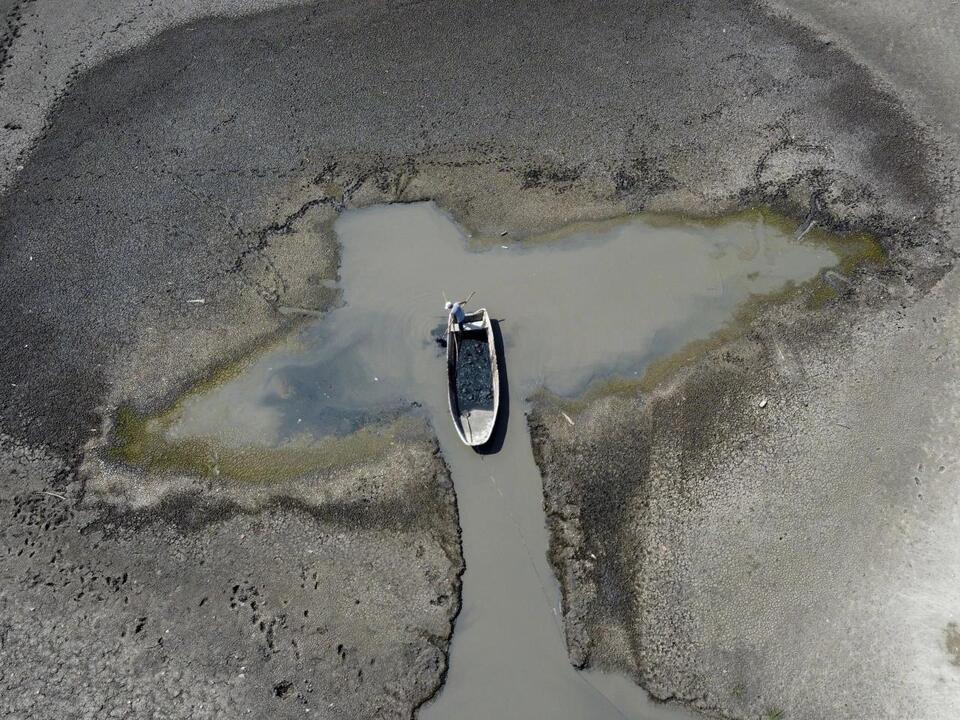Physical Address
304 North Cardinal St.
Dorchester Center, MA 02124
Physical Address
304 North Cardinal St.
Dorchester Center, MA 02124

BELGRADE, Serbia — Jelena Popovic usually enjoys the summer warmth, but this year was different. For the Belgrade resident, the summer heat became unbearable.
“This summer was too hot, you couldn’t walk in the city. It was only pleasant when you swim,” Popovic shared. “It felt like we were living in Africa rather than Europe.”
This sentiment was echoed throughout the Balkans, a region known for its warm summers. However, this year saw temperature extremes that surpassed all previous records, with relentless heat waves and an unprecedented dry spell in July and August.
Experts have confirmed that the summer of 2024 was the hottest in the Balkans since record-keeping began over 130 years ago. Persistent temperatures exceeding 30°C (86°F) and minimal overnight cooling, with temperatures not dropping below 20°C (68°F), have driven average temperatures to unprecedented levels.
“Typically, summer brings a mix of hot days and breaks with rain after about five or six days. But this pattern was only observed in June,” said Serbian meteorologist Nedeljko Todorovic. “Almost the entire months of July and August were devoid of rain while temperatures remained high.”
Climate scientists attribute this extreme weather to global warming, largely driven by fossil fuel combustion. This has resulted in consecutive monthly heat records, marking a troubling trend.
The European climate service Copernicus recently reported that summer 2024 was the hottest recorded globally, indicating that this year may end up being the warmest humanity has ever experienced.
Southeast Europe, in particular, was essentially “trapped” under a warm subtropical air mass from Western Africa and the Mediterranean, according to Goran Pejanovic from Serbia’s Hydrometeorological Service.
“We faced four heat waves this summer, with the most intense one lasting from July 5 to 21—nearly three weeks without any rain,” Pejanovic described. “Overall, this summer was 3.3 degrees warmer than the average.”
In Slovenia, an Alpine country sharing borders with Austria and Italy, summer temperatures increased by 2.5 degrees compared to pre-2020 averages. The report from Slovenia’s Environmental Agency highlighted that the summer lacked the typical cooler periods expected for a mountainous region.
Record temperatures were not limited to lower areas; they also reached new heights in the Julian Alps, with temperatures remaining above 30°C (86°F) on several occasions into early September.
In Bosnia, the number of extraordinarily warm nights and days increased dramatically. Bakir Krajinovic from Bosnia’s Hydrometeorological Institute reported that these numbers tripled in some regions compared to the previous year, already the hottest on record.
Neighboring Croatia observed historic highs in the Adriatic Sea, with temperatures hitting 30°C (86°F) in certain areas, further emphasizing the extent of this record-breaking summer.
Last year was already classified as the hottest globally due to a combination of human-induced climate change and the natural El Niño phenomenon, which warms portions of the Pacific. As a result, heat waves are now characterized by higher temperatures, longer durations, and increased frequency.
These extreme conditions have caused significant ecological and agricultural challenges in the Balkans. Rivers have dried up, forest fires have erupted in Croatia, North Macedonia, and Albania, and crops across the region have suffered.
High nighttime temperatures prevent both humans and wildlife from cooling down adequately, a situation exacerbated in urban areas where concrete structures trap heat.
In Montenegro, meteorologists noted overnight temperatures in some towns reaching as high as 29°C (84°F).
While the unrelenting heat provided a boost to tourism along Albania’s coast, it negatively impacted agriculture and energy production. Almost 98% of Albania’s power supply relies on hydropower, which has been severely affected by prolonged drought conditions.
North Macedonia faced approximately 2,000 forest fires over the last three months—three times the number reported in 2023—destroying vast stretches of forest land. Emergency official Stojanche Angelov cautioned that without rain soon, the risk of wildfires could persist into November.
Additionally, many villages and towns in Serbia are enduring drinking water shortages due to drought conditions. Water tanks have been transported to remote areas to supply thirsty livestock.
The Rusanda salty lake in northern Serbia has completely dried up, leaving behind a barren gray surface. Local medical center staff had to transport water to provide mud for treatment, a situation they had never experienced to such an extreme before.
“It’s not the first time this happened, but never like this year,” remarked Jovica Mudric. “Everyone likes summer, but we could certainly use some rain.”
Source: Associated Press



